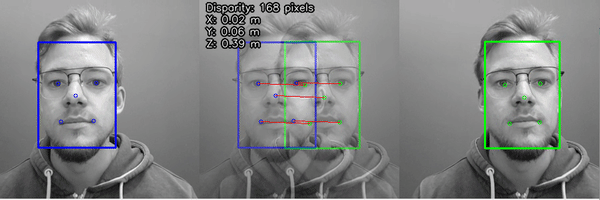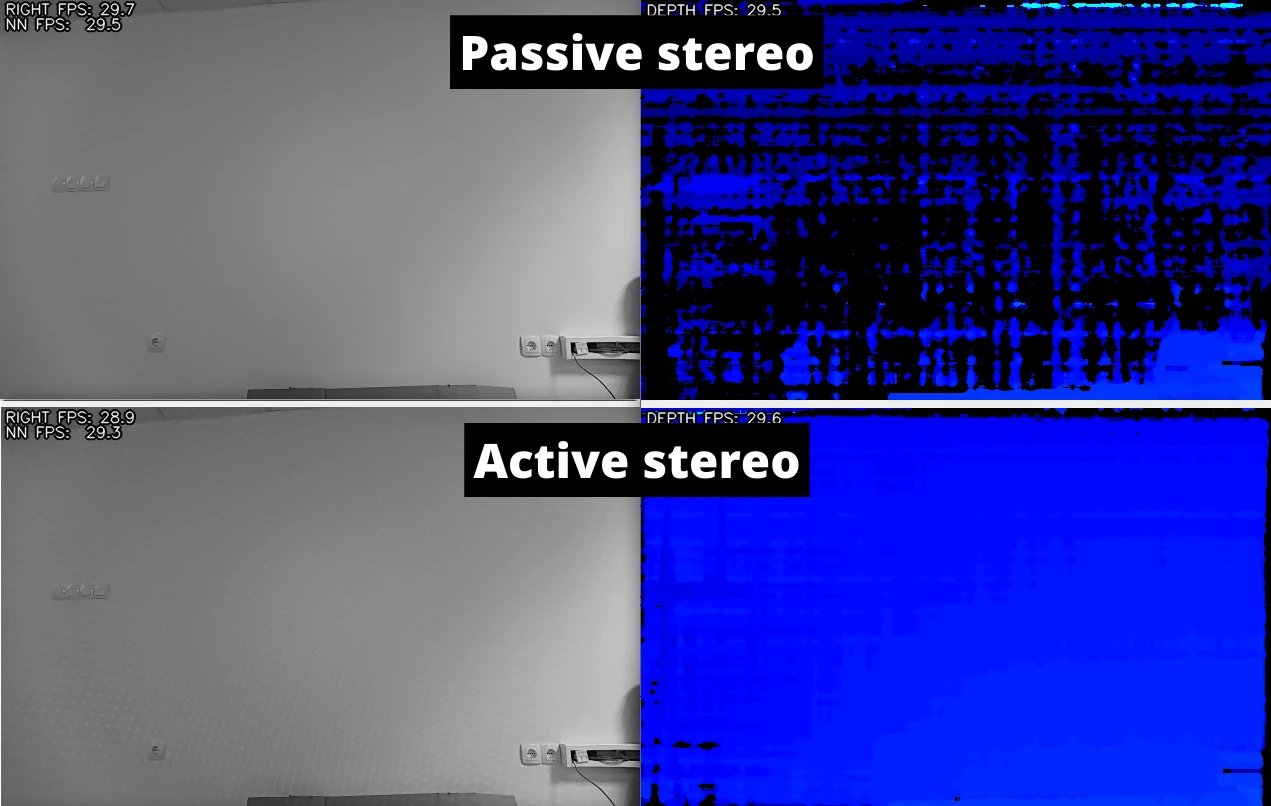Depth Perception
- Passive Stereo Depth - Used by non-Pro version of OAK-D and OAK4-D cameras.
- Active Stereo Depth - Used by Pro version of OAK cameras.
- Time-of-Flight Depth - Used by OAK-ToF.
Passive Stereo Depth

Passive stereo depth perception may not work well with featureless surfaces like walls or ceilings, as disparity matching relies on distinctive points or features.
- Lighting/Texture: Stereo depth depends on feature matching, which can be challenging in low light or on featureless surfaces. Active stereo can resolve both texture and lighting issues.
- Calibration: Factory calibration is typically optimal.
- Postprocessing filters: More information can be found here (under Depth Filters). Additional filtering can be performed on the host side as well, e.g., WLS filter.
Active Stereo Depth
 The image above shows passive and active stereo perception against a wall. The mono image (bottom left) displays the projected dots.
The image above shows passive and active stereo perception against a wall. The mono image (bottom left) displays the projected dots.Time-of-Flight Depth
 The gif above demonstrates a high-accuracy point cloud produced using a ToF FFC module and a color camera. The ToF resolution here is 244x172.
The gif above demonstrates a high-accuracy point cloud produced using a ToF FFC module and a color camera. The ToF resolution here is 244x172.